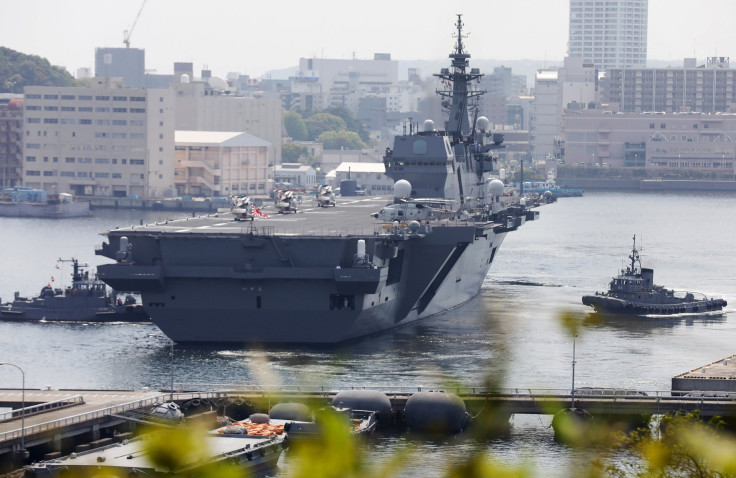Japan Considers Adding Aircraft Carriers To Navy Amid North Korean Threat

The Japanese government is considering adding aircraft carriers to its arsenal amid continued threats from North Korea and to counter Chinese aggression in the region, according to German public broadcaster DW Monday.
Japan’s plan would be to remodel two Izumo class warships that are currently designated as helicopter destroyers into aircraft carriers. The ships carry 14 helicopters apiece now, but could be retrofitted to carry 10 F-35B fighter jets, according to Japan News. The stealth fighters, manufactured by Lockheed Martin are designed to take off from a short runway and land vertically.
Following World War II, the Japanese constitution prohibits the military from having offensive weapons and designates its forces as self-defense. The procurement of aircraft carriers with that ability to strike foreign bases may fall afoul of that clause, but some government officials argue that the constitution doesn’t expressly forbid aircraft carriers.
“Even though these ships already look very much like aircraft carriers, they are officially classified as helicopter destroyers, but the changing security environment in the Asia-Pacific region means that Tokyo believes it now needs a full flat-top capable of handling stealth fighters,” Jeff Kingston, director of Asian Studies at the Japanese campus of Temple University told DW. “That [would be] a major development that follows Prime Minister Shinzo Abe's doctrine of easing the restraints that have been put on the Japanese military since the end of the war.”
The new carriers would increase interoperability with the U.S. military, creating the ability to refuel U.S. aircraft, according to Jane’s Defense Weekly.
The move would act as a counter to North Korea, who over the past year has aggressively advanced its nuclear and missile capabilities. Last year North Korea test-fired two missiles that flew directly over Japan’s northern island Hokkaido in addition to detonating its sixth and largest nuclear weapon in September.
“Japan is clearly very anxious about the threat posed by North Korea,” said Kingston. “Japan will say — quite rightly — that it lives in a dangerous neighborhood, that it cannot continue to bury its head in the sand of unilateral pacifism and that it exists in a very different threat environment than it did in the 20th century.”
Japan also faces aggression from China who has seized reefs and atolls in the South China Sea that are also claimed by several other Asian nations including Vietnam and the Philippines. Japan has their own island dispute with China regarding the Senkaku Islands. The uninhabited islands off the coast of Taiwan are claimed Japan, Taiwan and China, but administered by Tokyo.
© Copyright IBTimes 2024. All rights reserved.











